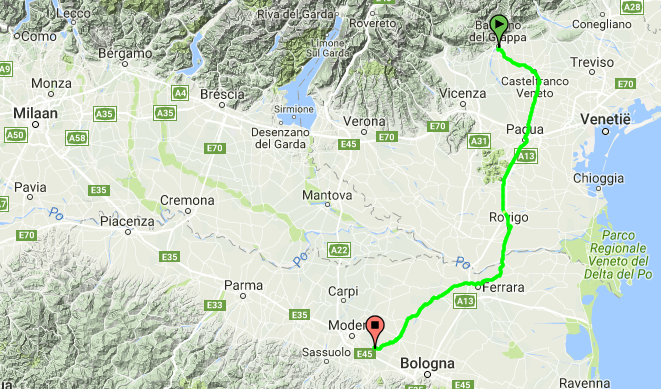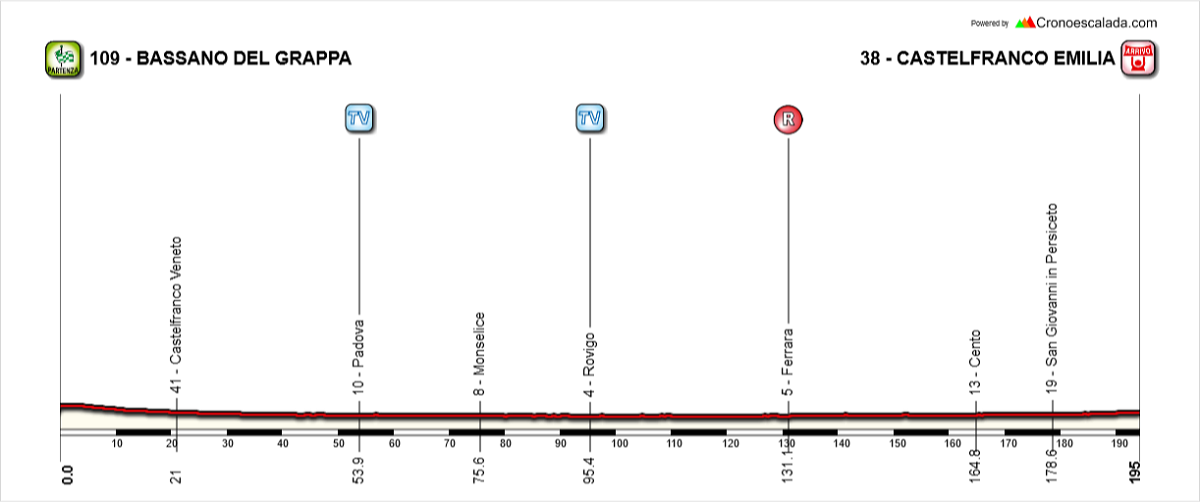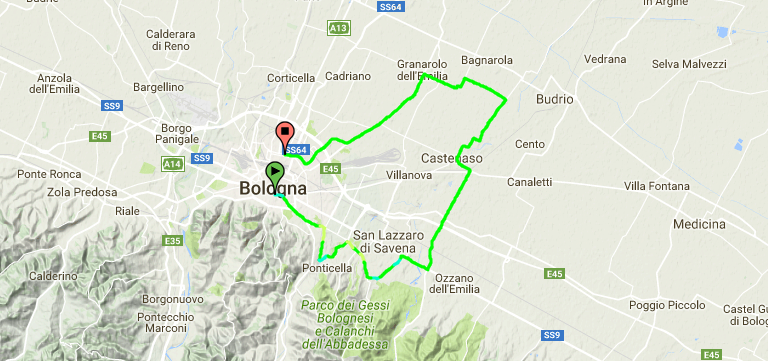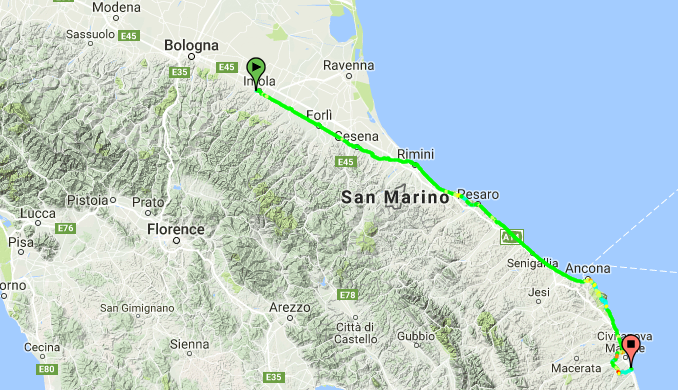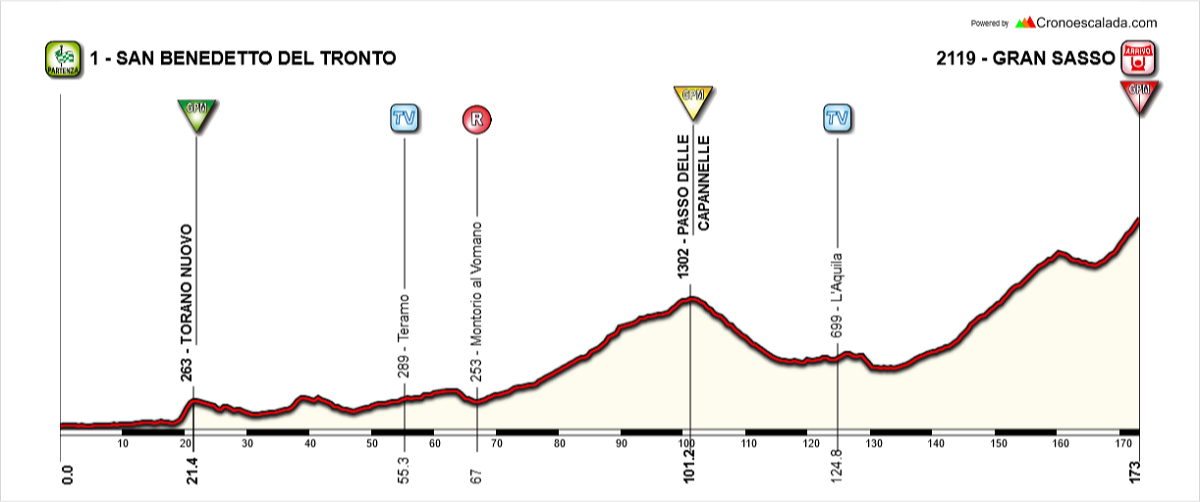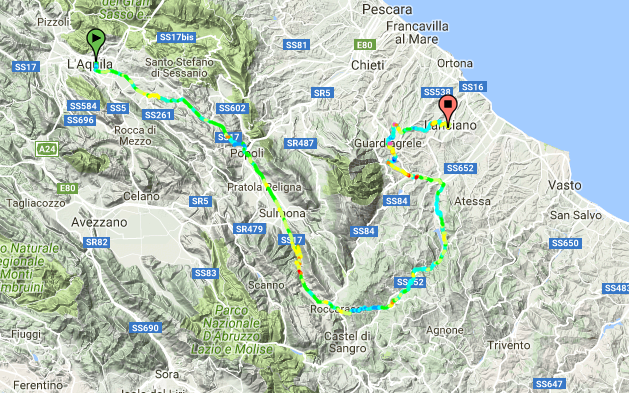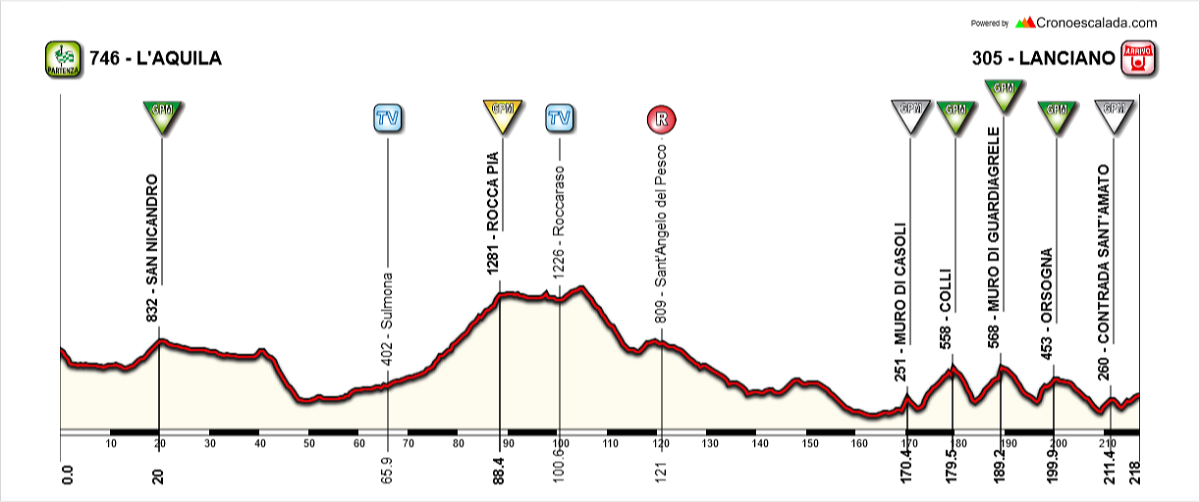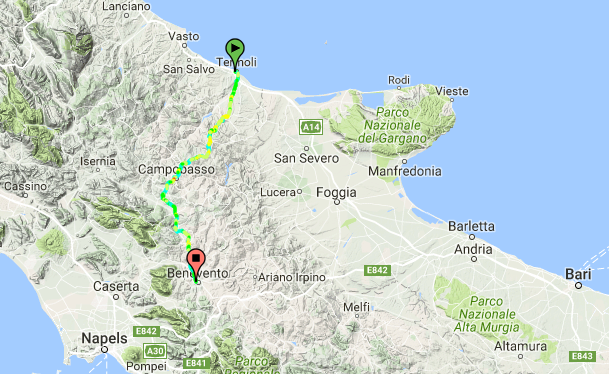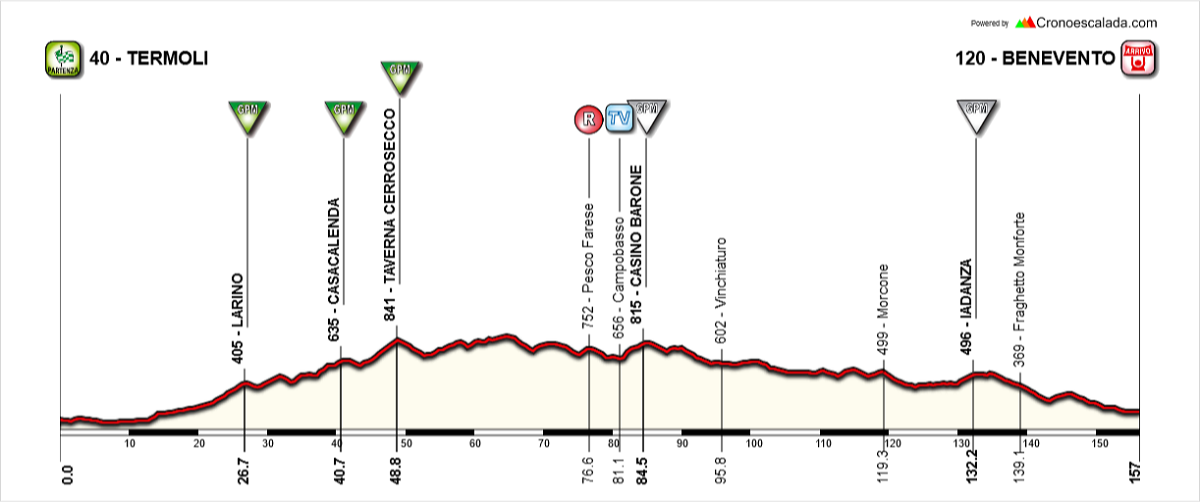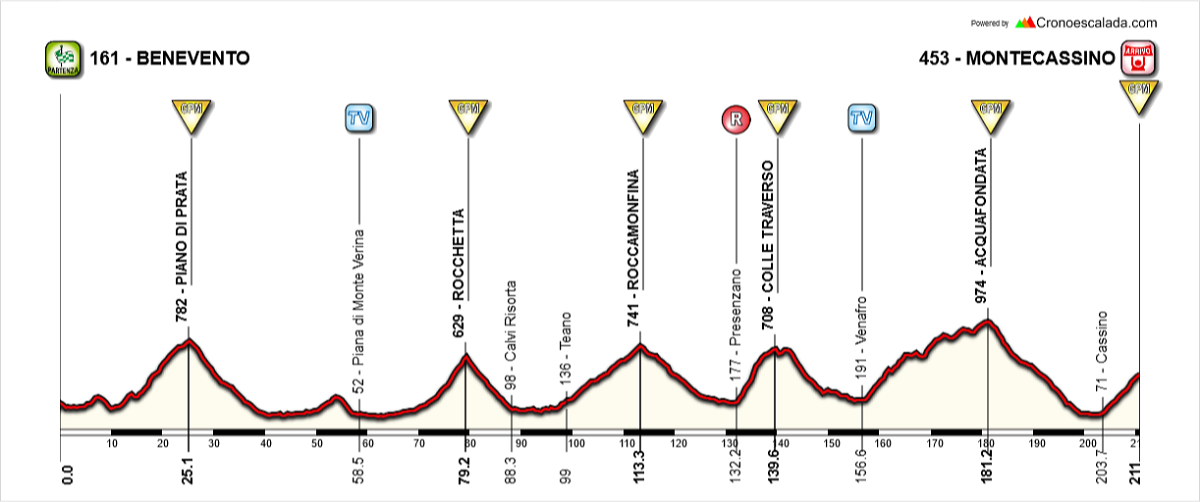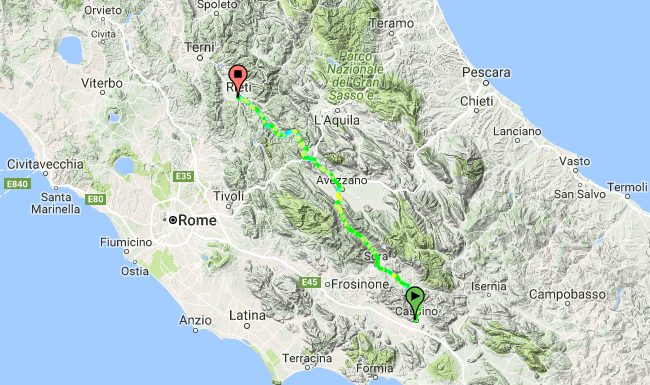Vuelta a Espana: Stage 12: Barcelona - Girona, 221 km
The last of the hilly stages along the Mediterranean coast. The route zig-zags between the coast and the more hilly inland. The first 40 km of the stage is along the coastline going north. Then the route makes a left turn and the first climb to Coll Sacreu starts. The riders are back at the coast after about 100 km. Here they follow the coast for about 10 km before the next (uncategorized) climb starts, at Lloret del Mar. This is followed by a flatter section before descending back to the coast at Tossa del Mar after about 140 km.
Here the toughest climb of the stage starts, to St. Grau d'Argenya. After descending, there is an about 8 km long flat section before the third categorized climb of the day, to Saint Pellaia. With about 25 km left, the riders turns east and quickly starts the last climb to the stage, to Mare de Deu dels Angels. The climb should be difficult enough for aggressive riders to try an attack and hopefully stay clear of the peloton. From the top of the climb there is about 10 km downhill and 5 km flat to the stage finish in Girona.
Climbs:
49 km: Coll Sacreu: 7,2 km, 4,5 %
156 km: St.Grau d'Argenya: 6,6 km, 6 %
179 km: Saint Pellaia: 4,6 km, 4,2 %
205 km: Mare de Deu dels Angels: 4,6 km, 6,3 %
Profile:

Map:

The last of the hilly stages along the Mediterranean coast. The route zig-zags between the coast and the more hilly inland. The first 40 km of the stage is along the coastline going north. Then the route makes a left turn and the first climb to Coll Sacreu starts. The riders are back at the coast after about 100 km. Here they follow the coast for about 10 km before the next (uncategorized) climb starts, at Lloret del Mar. This is followed by a flatter section before descending back to the coast at Tossa del Mar after about 140 km.
Here the toughest climb of the stage starts, to St. Grau d'Argenya. After descending, there is an about 8 km long flat section before the third categorized climb of the day, to Saint Pellaia. With about 25 km left, the riders turns east and quickly starts the last climb to the stage, to Mare de Deu dels Angels. The climb should be difficult enough for aggressive riders to try an attack and hopefully stay clear of the peloton. From the top of the climb there is about 10 km downhill and 5 km flat to the stage finish in Girona.
Climbs:
49 km: Coll Sacreu: 7,2 km, 4,5 %
156 km: St.Grau d'Argenya: 6,6 km, 6 %
179 km: Saint Pellaia: 4,6 km, 4,2 %
205 km: Mare de Deu dels Angels: 4,6 km, 6,3 %
Profile:

Map:








